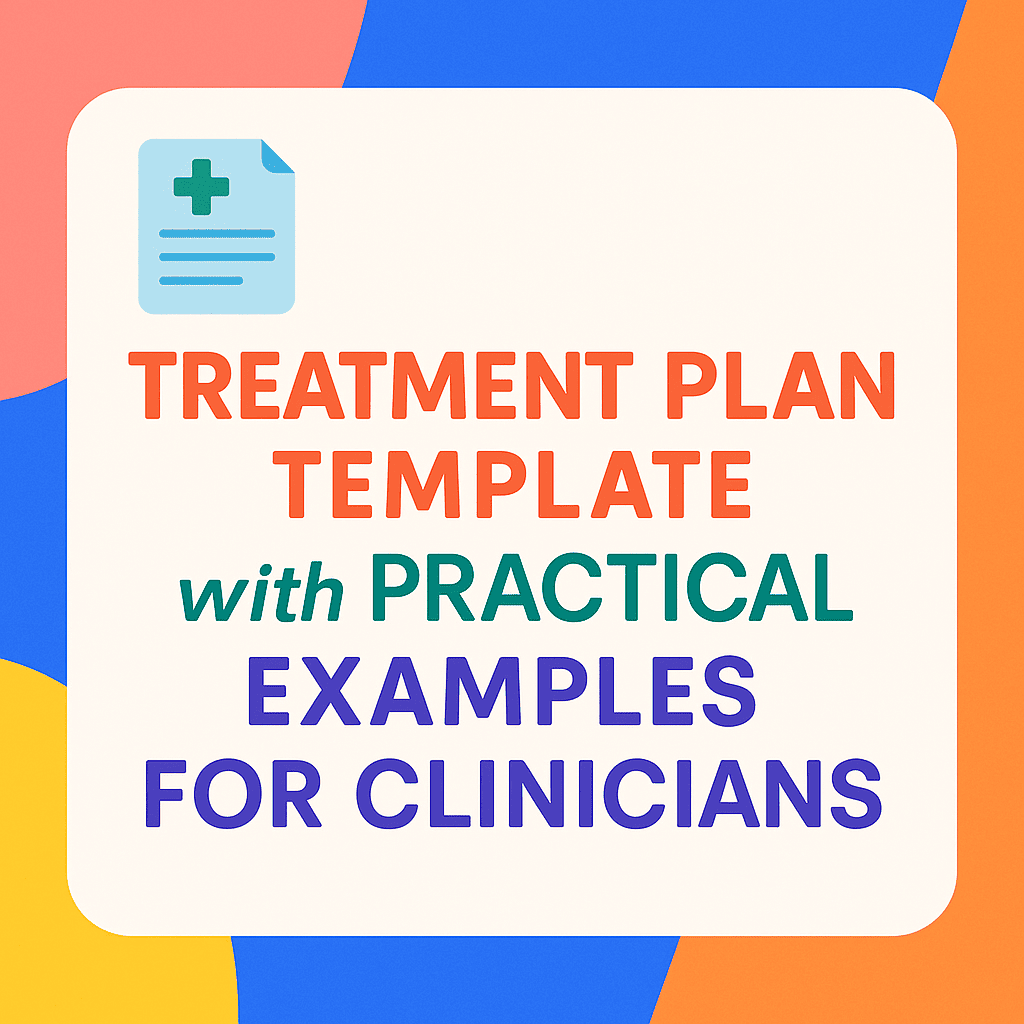Updated on: September 11, 2025
Download the standardized Treatment Plan template for clinical use.
Download the standardized Treatment Plan template for clinical use.
Enter your email to access this resource.
Treatment Plan Template for Clinicians (With Examples)
A structured treatment plan template serves as a roadmap for patient care—clearly defining diagnosis, goals, objectives, interventions, and follow-up. It ensures transparency, drives meaningful outcomes, and enhances clinical documentation with tools like DocScrib’s AI Scribe.
What Is a Treatment Plan Template?
A treatment plan outlines a step-by-step strategy to help patients achieve specific health goals. Typically it includes:
- Diagnosis & Presenting Problems
- Short- & Long-Term Goals
- Measurable Objectives
- Interventions & Modalities
- Monitoring & Crisis Management
- Review/Update Schedule (youtube.com)
It’s a collaborative document built with the patient to chart progress, adjust care, and support outcomes.
Why Clinicians Should Use a Template
- Clarity & Alignment: Patients and care teams understand the path forward
- Efficiency: Standardized structure saves time
- Quality of Care: Ensures key areas like safety planning aren’t overlooked
- Compliance: Meets insurance or certification requirements, especially in behavioral and mental health
Essential Components of a Treatment Plan
Outlined below is a universal framework suitable for medical or behavioral health scenarios:
- Patient Details & Diagnosis
- Name, age, date; Primary and secondary diagnoses
- Treatment Goals
- Short‑term (e.g., “Reduce A1C to <7% in 3 months”)
- Long‑term (e.g., “Avoid diabetes complications by year 2”)
- Objectives
- Specific, measurable steps (e.g., “Walk 5 days/week, 30 min each”)
- Interventions
- Medication management, lifestyle changes, counseling, referrals
- Modalities & Schedule
- e.g., weekly therapy, daily home exercises
- Monitoring & Adjustments
- Lab tests, outcome measures, follow-ups
- Crisis Plan
- Document emergency or relapse protocols (youtube.com)
- Review & Signatures
- Date, clinician, and patient agreement
Sample Treatment Plan Template
Patient: Jane Smith | DOB: 05/10/1980
Diagnosis: Generalized Anxiety Disorder (GAD)
Goals:
- STG: Reduce anxiety score from 15 to ≤10 (GAD‑7) in 8 weeks
- LTG: Improve daily functioning—attend social events weekly
Objectives:
1. Practice deep‑breathing 3× daily
2. Attend CBT sessions weekly for 12 weeks
3. Engage in 30 min walk 5× per week
Interventions:
- Cognitive Behavioral Therapy
- Sertraline 50 mg daily
- Mindfulness exercises & pacing
Monitoring:
- Weekly GAD‑7 score
- Monthly medication review
Crisis Plan:
- If anxiety >20 (GAD‑7), student contacts clinician on call
Signatures:
- Clinician: Dr. Lee, 07/01/2025
- Patient: Jane Smith, 07/01/2025
Review Date: 10/01/2025
Treatment Plan Template Walkthrough
Watch this video to explore real-world templates in action:
How to Write a Treatment Plan – Zynnyme Walkthrough
Best Practices for Treatment Planning
- Use SMART objectives: Specific, Measurable, Achievable, Relevant, Time-bound (youtube.com)
- Collaborate with Patients: Ensures buy-in and relevancy
- Document Safety Plans: Especially in behavioral or chronic disease cases
- Regular Updates: Revise every 3–6 months or as patient needs evolve
How DocScrib Enhances Treatment Plan Creation
With DocScrib’s AI Scribe, clinicians can:
- Dictate goals and interventions during the session
- Auto-format structured plans ready for EHR
- Customise templates for different specialties and visit types
- Update dynamically based on progress, with AI assistance
This saves hours per week and ensures comprehensive, accurate documentation.
Key Takeaways
- Treatment plan templates promote structured, goal-driven care
- Effective plans include measurable goals, interventions, and monitoring
- Collaboration with patients fosters engagement and outcomes
- DocScrib streamlines template creation, adaptation, and follow-up, reducing admin workload
Ready to make treatment planning easier and more effective?
👉 Download your free, customizable Treatment Plan Template for DocScrib and transform how you care for your patients today!
